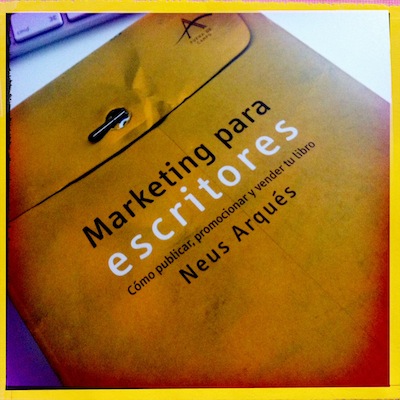Discernimientos / Discernments
Saul Bass en el Círculo de Bellas Artes
Saul Bass at the Círculo de Bellas Artes

El tiempo ha tratado muy bien la obra de Saul Bass, y aún hoy, cientos de diseñadores parten directamente de sus ideas, experimentos tipográficos, enfoque visual, figuras recortadas (tan influidas por la época de papel y tijera de Matisse) y áreas planas como Saul Bass.
En esta exposición, no solo se hace un repaso de sus carteles más famosos para cineastas como Otto Preminger, Alfred HItchcock o Billy Wilder; también podremos ver, proyectadas, toda una colección de títulos de crédito de estas y otras películas.
Un diseñador cuyo trabajo no se quedó en el papel. ¿Sabíais que la famosa escena de la ducha de "Psicosis" fue visualmente concebida por Saul Bass? Aquí podréis ver los dibujos originales para el storyboard.
Time has treated well Saul Bass' work, and still today, hundreds of designers are inspired by his ideas, typographic experiments, visual focus, plain areas and cut-out human figures (so influenced by the scissors-and-paper era of Mattisse).
In this exhibition, along with a review of his most famous posters made for filmmakers as Otto Preminger, Alfred HItchcock or Billy Willder, you will be able to see a projection of many of his credit titles for those and other directors.
A designer, then, whose work did not ultimately stay only on paper. Did you now that the famous scene in "Psycho" was visually conceived by Saul Bass? Here you can see his original storyboard designs.
Todo lo que deberías saber antes de amarme de Gerard Guix
Gerard Guix’s Todo lo que deberías saber antes de amarme

Hay pocas novelas en que, de forma casi (¿o no?) literal, el autor desnude su alma, sus sentimientos y su manera de vivirlos, expresarlos y exponerlos, especialmente por lo que se refiere a una sensación tan compleja como el amor; no el reposado, distante e idealizado, sino el que irrumpe en nuestras vidas, lo cambia todo a su paso, y va y viene como un torbellino, alterando constantemente nuestra forma de vernos a nosotros mismos, nuestras relaciones, nuestras amistades, nuestra familia e incluso la consideración que tenemos de nosotros mismos.
¿Estarías preparado para un amor así? ¿Sabrías soportarlo, sobrellevarlo, incluso disfrutarlo… o protegerte de él? Una pista que nos da Gerard para saber sobreponerse a un amor así es que tu vida podría adquirir las múltiples capas, misterios y recovecos que una caprichosa matroska rusa.
There are very few novels in which, in an almost literal (or not?) form, the author gets his soul naked, along with his feelings and his way of living them, expressing them and exposing them, specially regarding a feeling so complex as love; but not the tranquil, distant and idealized love, but the one that breaks into our lives, changing everything in sight, coming and going as a whirlwind, constantly altering the way we see ourselves, our relationships, our friendships, our families and even the consideration that we have about us.
Would you be ready for loving this way? Could you cope with it, endure it, even enjoy it… or protect yourself from it? One clue that Gerard gives us to overcome such kind of love is that your world, your life, your way of living… could acquire the multiple layers, mysteries, twists and turns that a russian matryoshka hides.
Tres de Melissa P.
Melissa P.’s Three
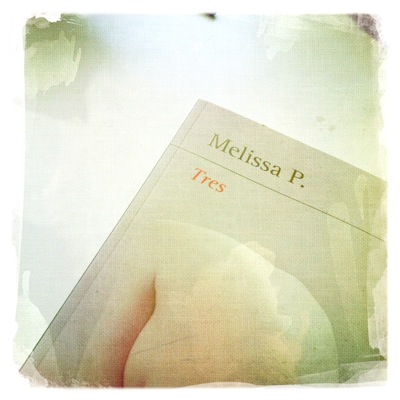
Siendo la literatura un medio al que los sentidos deben someterse, a través de la palabra, para encontrar su excitación, es curioso cómo en tan pocas novelas, por táctiles que sean sus impresiones, los procesos sensoriales más elementales apenas son invocados.
En la obra de Melissa, sin embargo, el cuerpo y sus procesos, por orgánicos, sexuales, placenteros o dolorosos, son siempre parte de la acción, definen la trama y dirigen a sus personajes.
¿Hasta qué punto, pues, controlamos nuestro cuerpo? ¿O son las sensaciones que de él se desprenden las que nos controlan a nosotros… y a nuestros destinos?
Pocas veces, como en Tres, el cuerpo se siente tan libre en sus ataduras y tan prisionero de su libertad.
Being literature a medium to which senses must submit themselves, through the written word, to find their arousal, it is odd to realize that in so few novels, no matter how tactile their impressions, sensorial processes are barely invoked.
In Melissa's work, nonetheless, the body and those processes, no matter how organic, sexual, pleasant or painful, are always part of the action, define the plot and drive the characters.
Up to what extent do we control our body? Or are the feelings that arise from it the ones that control us… and our destinies?
Seldom, as in Three, the body feels free in shackles while being a prisoner of freedom.
Cómo fracasé en la vida de Santini y Gatignol
Santini and Gatignol’s Comment j’ai rate ma vie

¿Cómo fracasar en la vida? De primeras, podría parecer que esto es, de forma lógica, todo lo contrario a lo que cualquiera de nosotros podría querer.
Sin embargo, como demuestran Santini y Gatignol en este breve, conciso y potente libro ilustrado para adultos, lo que hacemos en la vida, pensando en triunfar, nos lleva en demasiadas ocasiones a fracasar en ese objetivo que deberíamos tener tan presente, y que tantas veces es lo primero que olvidamos: vivir.
Con un dibujo sencillo, rayando en lo minimalista, una narrativa absolutamente desprovista de cualquier retórica, y que va al grano con un estilo directo y acertadamente desapasionado.
Un libro que esconder en casa, para encontrarlo de vez en cuando y preguntarnos si estamos consiguiendo fracasar en la vida.
How to fail in life? On a first thought, it could seem the opposite to anything any of us could desire.
Nonetheless, as Santini and Gatignol show us in this brief, concise and powerful illustrated book for adults, sometimes the decisions we take in life, thinking in terms of success, makes us fail in what we should really have in mind, and that we so many times forget: to live.
With simple, almost minimalist illustrations, a narrative devoid of any trace of rhetorics, this book hits the spot with a direct, dispassionate style.
A book, in the end, to hide at home, to find it at different stages of our life and thus ask ourselves if we are succeding at failing in life.
El último Rafael en el Museo del Prado
The late Raphael at the Prado Museum
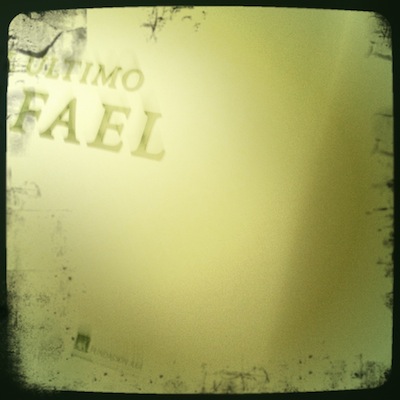
En pocas ocasiones se tiene la oportunidad de contemplar juntas las obras de uno de los Maestros más influyentes del Renacimiento, incluso las de un período tan enigmático como la última etapa vital de Rafael.
Si algo destaca de entre dichas obras, es la verdad y autenticidad que destilan sus rostros, y mucho más en los retratos de sus amigos que en las obras religiosas, por su sinceridad y humanidad.
Y entre todos ellos, ciertamente hay uno en concreto que, por sí mismo, resulta una de las cimas de la pintura universal; una obra de la que se pueden escribir volúmenes sobre su prodigioso colorido, su elusiva pincelada o su magistral equilibrio compositivo; una obra frente a la que podríamos pasar años, tratando de descubrir el misterio de una mirada que solo los mejores amigos pueden entender.
In seldom ocassions it is possible to contemplate together the works of one of the most influential Renaissance Masters, and even more those from such an enigmatic period as Raphael's late phase.
If something can be highlighted among those works is the truth and autenticity that springs from its painted visages, much more in the portraits of his friends that in the religious themes, because of its closeness, sincerity and humanity.
And among all of them, there is one which, by itself, has become one of the summits of universal painting; a masterpiece which volumes can be written about, because of its prodigious colour, its elusive brushtroke work or its masterful compositive equillibrium; a work of art in front of which we could spend years just trying to discover the mystery of a stare that only best friends can truly understand.
Márketing para escritores, por Neus Arqués
Marketing for writers by Neus Arqués
Una de las cosas que, en su día, me provocaban inseguridad a la hora de contemplar mi futuro como escritor, tenían que ver con ese momento en que el editor iba a recibir mi texto y debía evaluarlo para considerar su publicación.
Afortunadamente, dichas dudas se esfumaron cuando me tropecé con Marketing para Escritores, un libro cuyo título puede asustar a algunos (¿marketing? ¿vender? ¿yo?), pero al que, si dais una oportunidad, encontraréis especialmente útil para elaborar elementos como la propuesta editorial, un título adecuado o la auto-promoción de vuestros libros en las redes sociales.
¿Funciona? Tan solo puedo decir que apliqué los consejos de "Márketing…" para tres propuestas editoriales y ahora… son mis tres libros publicados.
Back in the day, one of the things that made me feel insecure when thinking about my future as a writer were related to that moment in which a publisher would receive my text and would then evaluate it for publication.
Luckily, those doubts vanished when i found Marketing for Writers, a book whose title might frighen off some (marketing? selling? me?), but that if given a chance, you will find it specially useful to work on factors like the publishing proposal, an adequate title for your book or the self-promotion of your books in social media.
Does it work? I can only say that I applied every piece of advice from Marketing… to three publishing proposals and now they have become my three published books.
La maleta mexicana en el Círculo de Bellas Artes
The mexican suitcases at the Círculo de Bellas Artes
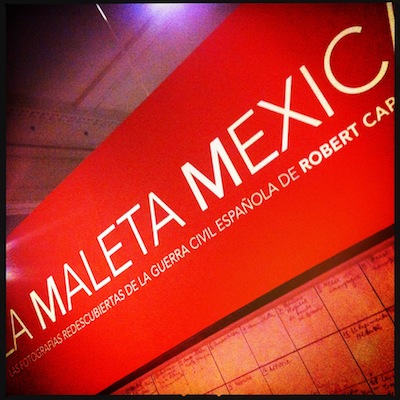
Una de las razones por las que siempre me ha fascinado la fotografía, y mucho más la que representa el siglo pasado, es porque, aunque a veces lo olvidamos por lo evidente que parece, los que nos miran desde esas fotos son las personas que vivían en ese momento y en ese lugar.
Algo que, cuando se trata de fotografía de guerra, y representa a ciudadanos como nosotros, que vivían en paz sus vidas y, de un día para otro, se vieron huyendo de las bombas, abatidos por las balas, refugiados de la pérdida de todo lo que tenían…
Tan solo podemos recordar que es nuestra responsabilidad impedir que algo así nos vuelva a suceder.
Convirtamos, pues, ese ejercicio de memoria en una reflexión para el presente, y reforcemos cada día nuestro compromiso cívico y ciudadano, de vivir en paz.
One of the reasons why photography has always fascinated me, and much more the kind that represents last century is that, even though we sometime forget it (so evident it seems), the people that looks at us from those pictures are the people that actually lived in that place and time.
Something that, when the issue is about war photography, and one which pictures citizens like us, living their lives in peace and suddenly forced to run away from the bombs, chased by bullets, taking refuge from the loss of everything they had…
We just can remember that it is our responsibility that something like that will not happen again.
Let us turn, then, that exercise in memory in a reflection for the present and let us reinforce each day our civic duty of living in peace.
Hopper en el Museo Thyssen-Bornemisza
Hopper at the Thyssen-Bornemisza Museum
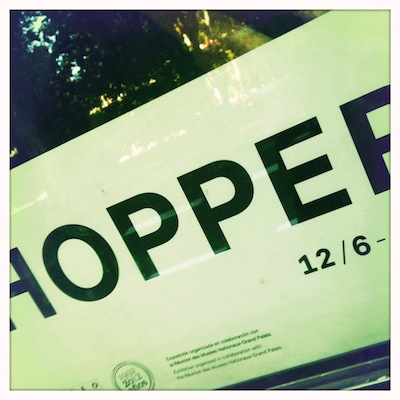
Edward Hopper (1882-1967) se ha ganado un puesto imborrable en el imaginario colectivo como el pintor de la soledad ciudadana, de las figuras abstraidas, de las miradas perdidas, de la alienación cotidiana…
Sin embargo, personalmente entiendo que definir su obra exclusivamente en estos términos representa una visión fácil y cómoda por tópica, pero reduccionista y poco justa con un pintor que nunca dejó que tales temas encerraran su creatividad.
Así pues, la exposición del Thyssen-Bornemisza nos presenta una oportunidad para conocer a eos "otros" Hopper: fascinado por la perspectiva, marcado por Cézanne y Degas, dividido por la pincelada matérica, fiel a su gama de color y atento a las más leves variaciones de la luz de un ya eterno día de verano.
Edward Hopper (1882-1967) has earned his rightful place in the collective imagination as the painter of lonely citizens, absorbed figures, lost stares, everyday alienation…
Nonetheless, I personally think that defining his work exclusively in these terms represents a comfortable, easy, topical vision, and one that is reductionist and unfair with a painter that never let those themes cage his creativity.
To prove that, the Thyssen-Bornemisza exhibition presents us with an opportunity to meet those 'other Hoppers': fascinated by perspective, marked by Cézanne and Degas, divided by materic brush strokes, loyal to his own color range and always registering the slightest light variations of a by now eternal summer day.
La Escuela de la Vida abre en Londres
The School of Life opens in London
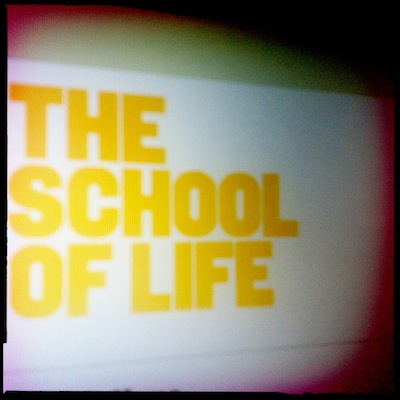
¿Alguna vez os habéis preguntado por qué en el colegio no nos enseñan materias como sentido común, empatía, relaciones interpersonales, manejo del dinero, equilibrio emocional o sexualidad sana?
Recientemente, ha abierto en Londres un híbrido entre tienda, taller y academia de lo más curioso, ya que su objetivo no es otro que enseñarnos a vivir.
Entre sus miembros fundadores, está el filósofo Alain de Botton, al que muchos recordaréis por su entretenido y brillante Cómo cambiar tu vida con Proust.
Con elementos presenciales como charlas, clases o biblioterapia, su concepto se aproxima más al de la enseñanza de la estoa que a eso que solemos llamar auto-ayuda. Y para los que no podemos ir, también han publicado una interesante colección de libros.
Have you ever wondered why we are not taught at school subjects such as common sense, empathy, interpersonal relationships, money administration, emotional balance or healthy sexuality?
Recently, a hybrid of store, workshop and academy has opened in London whose goal is no other than to teach us how to live.
Among its members, you can find philosopher Alain de Botton, well known by his entertaining and brilliant How Proust can change your life.
With on-site educational elements such as classroms, lectures or bibliotherapy, its concept is closer to the stoa way of teaching than that which we usually call self-help. And for those of us who cannot regulary attend, an interesting series of books has been published. Are you sure you know how to live?

